Strategic, Military and Geopolitical outcomes of 1971 Bangladesh Liberation War
- In Military & Strategic Affairs
- 12:21 PM, Dec 21, 2020
- Mohal Joshi,Kishor Narayan
49 years ago, on December 16, 1971, Pakistan surrendered in Dhaka to the Indian and Mukti Bahini forces marking the end of a short war resulting in the formation of the new state of Bangladesh.
History/Background
Cyclone Bhola struck East Pakistan (now Bangladesh) in Nov 1970 which caused an estimated 500k (5 lakh) deaths. The response to this cyclone from the government of West Pakistan was poor which enraged the citizens of East Pakistan. East Pakistan (Bangladesh) was very different from West Pakistan in terms of language (Bengali vs Urdu) and culture. A good example of this dichotomy was the fact West Pakistani citizens saw themselves as an extension of the Middle East in a sort of an identity crisis where they don't want to be classified as part of Indian subcontinent or have anything related to India (something which even remains as of today), while East Pakistani Bengalis were comfortable as being part of the overall Indian subcontinent population. Some in West Pakistan also had a superiority complex and looked down upon the residents of East Pakistan as sort of being inferior to them. While the majority of the economic output came from East Pakistan, the real power in terms of governance including bureaucracy, civil services and armed forces (officers) lie mostly with West Pakistan. West Pakistan had a smaller land mass and a smaller population that East Pakistan even though they called the shots in the combined nation.
During the Dec 1970 elections, the Awami League under Sheikh Mujibur Rahman won 167/169 in the East and had a full majority in the combined national assembly of 313 seats (including both parts of Pakistan: East and the West). Zulfikar Ali Bhutto’s PPP party came in second with 81 seats. The Army under military dictator Yahya Khan had hoped that Bhutto would win either outright or join forces with the other parties to rule Pakistan going forward. The resounding win by the Awami League had now scuppered these plans of Yahya Khan who now refused to seat the Assembly to prevent Mujibur from coming to power. Sheikh Mujibur Rahman in 1966 had asked for greater autonomy for Bangladesh in Pakistan under a 6-point program.

Yahya & Bhutto could not let him attain power as he could reduce the importance of West Pakistan in the scheme of things. The military which had sort of a de-facto control in Pakistan would have their control possibly loosened under a Mujib government. While negotiations were on between the Awami League and West Pakistan the Pakistani military pushed more men into Bangladesh at the same time. On 25th March Operation Search Light (military program) was started where Pakistani soldiers arrested, tortured and killed Bangladeshis who had opposed them. Estimates of the number of people killed during what many call as genocide wary from 300,000 to 3 million (3 lakh to 30 lakh). Another sordid saga of this was the mass rapes of women during this ordeal where it has been said that anywhere between 200 to 400k women suffered at the hands of the Pakistani soldiers.
Geopolitics angle
Archer Blood the Charge de Affairs in the US consulate in Dhaka sent a now famous telegram to the Nixon administration in D.C. regarding the mass atrocities being committed in East Pakistan (which was signed by 20 members of the diplomatic staff)
“Our government has failed to denounce the suppression of democracy. Our government has failed to denounce atrocities. Our government has failed to take forceful measures to protect its citizens while at the same time bending over backwards to placate the West Pakistan dominated government and to lessen any deservedly negative international public relations impact against them. Our government has evidenced what many will consider moral bankruptcy,... But we have chosen not to intervene, even morally, on the grounds that the Awami conflict, in which unfortunately the overworked term genocide is applicable, is purely an internal matter of a sovereign state. Private Americans have expressed disgust. We, as professional civil servants, express our dissent with current policy and fervently hope that our true and lasting interests here can be defined and our policies redirected in order to salvage our nation's position as a moral leader of the free world.”
Then U.S. President Richard Nixon and his Secretary of State Henry Kissinger proceeded to recall him from his post (and put in a desk job). The reason for the indifferent attitude from Nixon/Kissinger to this genocide in Bangladesh was their secret outreach to China which was so secret that it was even hidden from some in the State Department. After the 1962 war Pakistan had grown very close to China due to both of them having a common adversary in India. Russia in the 1950’s had a very strong relationship with its communist ally China. However, due to several factors such as ideological clashes of Chairman Mao with Russian premier Khrushchev, withdrawing of aid by Russia to China, differing view of world geopolitics etc. caused fractures among the communist brothers in arms. The 1969 border clashes near the Ussuri River had cemented the Sino-Soviet split.
Nixon/Kissinger saw this as an opportunity to establish relations with China. This was to further isolate the Cold War adversary Soviet Union by bringing China into the world fold. The US back then had no diplomatic relations with China. Kissinger was using Pakistan as an intermediary to pass on a message to China. Thus, he needed Yahya Khan and did not wish to put pressure on him in any form in spite of the mass atrocities in Bangladesh.
Kissinger during this crisis in July 1971 stopped by in New Delhi before he made his way to Pakistan. There he feigned an illness due to eating some local cuisine and boarded a secret Pakistani plane to Beijing to go meet Chinese Premier Zhou Enlai.
Later in the summer Kissinger wrote a note regarding the events in East Pakistan to which Nixon replied in a handwritten note: 'To all hands don't squeeze Yahya at this time.' This made it clear to all the folks in the Nixon administration that he wanted everyone to back off from pressuring Yahya Khan.
To drum up more support for the Indian position, PM Indira Gandhi visited several countries such as Belgium, Austria, UK, France, Germany and USA and also gave interviews to western publications. She famously got a chilly reception from Nixon and Kissinger around her Nov 1971 state visit to the US. Both Nixon and Kissinger were supposed to have used crude and unflattering terms for both Indians and PM Gandhi.
In fact, when the Indian ambassador to the United States had informed Henry Kissinger that India was considering sending back some refugees to fight as guerillas, Kissinger had threatened that in such an eventuality the United States would cut off economic aid to India.
India was now faced with a daunting challenge of squaring up against China, Pakistan and the United States and knew that it needed to drum up support from anywhere it could. It was at this stage that in 1971 India and the Soviet Union signed a “Treaty of Peace, Friendship and Cooperation”. As per this treaty, both India and Soviet Union were forbidden to assist any third party that engaged in a conflict with the other party. In addition, Indira Gandhi managed to get an assurance from the Soviets that it would aid India in case of an armed conflict. Thus, firmly, the Soviets, the United States and the Chinese managed to place themselves in rival camps in South Asia.
Amidst all these happenings, the United States hoped to coax the Chinese to heat up the Line of Actual Control across the Himalayas as was witnessed during the 1965 war. Remember, in 1965, India had to station some troops in Sikkim to defend against Chinese calculated attacks, which in effect had blunted its defense against the Pakistani troops elsewhere.
Military Build Up to the War
Gen. (Later Field Marshal) Sam Manekshaw (Chief of Army Staff in 1971) in a now famous interview that he gave (a few years before his passing away) claimed that in April 1971 PM Indira Gandhi invited him to a cabinet meeting.
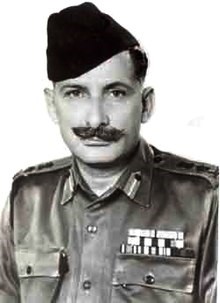
Gen Sam Manekshaw
PM asked Sam what he was going to do about the East Pakistan problem. Manekshaw, surprised at the question asked the PM what he should do in her opinion. PM Gandhi suggested that he should invade East Pakistan. Manekshaw replied saying that while he could not guarantee success, defeat was certain. He added later that he was not ready to start a campaign right now and needed time to prepare. Also, with the approaching monsoon it would be a quagmire to operate in riverine territory in East Pakistan plus the Himalayan passes would open up which could possibly lead to the Chinese opening up a new front against India. He suggested to the PM that she should let him plan for an operation in November when the Himalayan passes are closed (meaning Chinese can’t intervene) and that the monsoon would be over which would improve chances of a successful campaign.
The India military in 1971 had recently fought 2 wars in the last decade (1962 China & 1965 Pakistan). Thus, the military posture was that the bulk of its forces was concentrated towards the west against (then West) Pakistan and in the north vs China. This meant that in the run up to the eventual war forces had to be moved to the border area with East Pakistan.
The Indian military planners had planned for 3 separate Army Corps formations for the campaign in the Eastern Sector: II (2) Corps in West Bengal under Lt Gen T.N “Tappy” Raina, XXXIII (33) Corps in Sikkim under Lt Gen M.L. Thapan and IV (4) Corps in Tripura under Lt. Gen Sagat Singh. Another ad hoc force called the 101 Communication Zone was in Meghalaya. A sort of a calculated risk was done by the Indian military leadership that a portion of the 33 and 4 Corps which were facing the Chinese to the North in Tibet were repositioned to facing Eastern Pakistan. However, the call to move the reserve forces facing the Chinese was not consented to just in case the Chinese made any moves across the LAC to help relieve the pressure on Pakistan once the proverbial balloon went up.
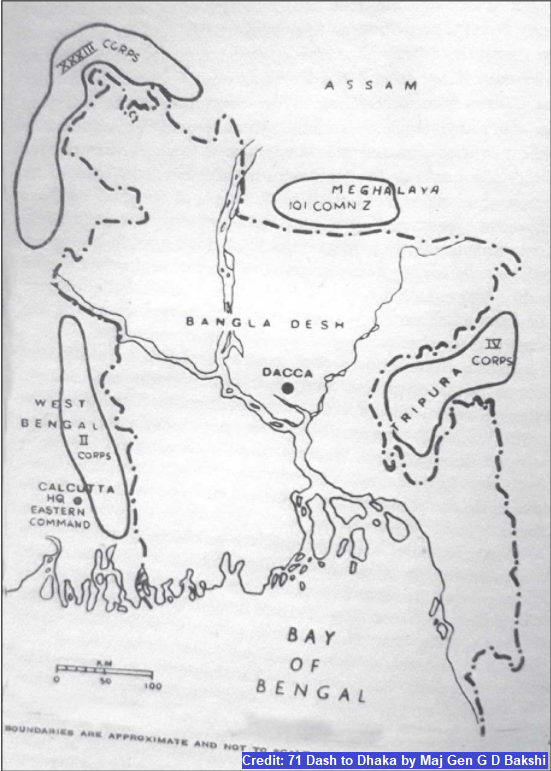
Image courtesy of 71: Dash to Dhaka written by Maj Gen G D Bakshi
The Pakistani military in the Eastern sector while having 100,000+ troops to defend were in a sort of a dilemma. Should they fall back to the capital area Dhaka and defend around the “triangle area” between 3 big rivers around Dhaka: Meghna, Padma and Jamuna or should they try to defend the entire territory of East Pakistan at all costs without surrendering any territory at all. India does share a 4,000+ km long border with Bangladesh (one of the top 5 longest borders in the world between 2 nations) which would make defending an extremely long border very hard even with a large force vs trying to defend a smaller area around Dhaka which could provide a more dogged defense against the Indian Army. Pakistani military went for the outward defense posture and set up military garrisons near the border to thwart any large-scale loss of territory against an attack by Indian armed forces.
The Indian military planners knew that war would need to be a short and swift campaign as there would be immense international pressure from the major powers to declare a ceasefire. During 1965 India did manage to capture a large amount of Pakistani territory (while losing some to Pakistan) by the time the war ended but was regarded as a stalemate. They were unable to land a decisive blow to Pakistan (though some felt that if it had lasted a bit longer India could have won as India had the momentum in the closing days of the war and that Pakistan was running out of supplies). To ensure a different outcome vs the stalemate of the 1965 war Indian military planners planned a blitzkrieg (also known as “lightning war”) a term which originated from WW2 when German forces overran most of Europe in the early stages of the war. Blitzkrieg involves overwhelming force concentration with the intent to break through the enemy’s line of defense by quick and powerful attacks using speed and surprise to encircle them including many times bypassing enemy strong points and enveloping/trapping them.
The Indian war plan in the East evolved over time. Initially the plan was to capture Khulna and Chittagong which are important port cities and capturing them would choke off imports and access to East Pakistan from the outside. The goal was to capture the maximum amount of territory before the ceasefire is called and to help the formation of free Bangladesh where refugees could be sent back. However, Maj Gen. J.F.R. Jacob the Chief of Staff of Eastern Army Command objected to this plan.
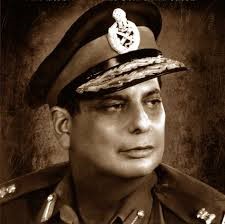
Maj Gen J F R Jacob
Image courtesy indiadefencereview.com
He argued that capture of Dhaka (vs Khulna and Chittagong) which was the military (“command and control”) and political epicenter of east Pakistan instead should be the main priority of the Indian campaign. Later on, as the war drew near the plan was revised to include Dhaka as the main objective of this campaign.
1971 War - Air Operations
On the evening of Dec 3rd, Pakistan Air Force based in West Pakistan launched pre-emptive air strikes against India as part of Operation Chengiz Khan. The operation targeted 11 Indian air force bases across western and northern India. Due to a whole host of factors such as India being forewarned by its sources + not a significant amount of PAF resources being committed to the attack to make an impact (i.e. holding back resources to respond to counter attack) + Indian countermeasures, etc. meant that the attack did not have much impact on the ground. Indira Gandhi in an address to the nation later that night said that the air strikes were a declaration of war and thus the 1971 war began. Indian air force retaliated against PAF in both the western and eastern sectors. By the 2nd week of the war India had pretty much established air superiority over East Pakistan.
On 14 Dec, six F-86 Sabre jets (PAF’s flagship fighters) had taken off from Peshawar with the aim of bombing the Srinagar air base. Flying Officer Nirmal Jit Singh Sekhon along with Flight Lieutenant Baldhir Singh Ghumman were on a 2-minute stand by in their Gnat/G Bird planes ready to take off within two minutes in case of an enemy attack. (somewhat similar to Wing Commander Abhinandan in Feb 2019).

Flying Officer Nirmal Jit Sekhon
With no radar back then in the Valley they were given warning of impending attack by advanced scouts. Just as the PAF fighter started their bombing run they took off to engage the enemy fighters. While his partner got lost in the fog surrounding Srinagar, Sekhon alone charged down on the six Pakistani fighters. In his firing at them, two of them panicked and headed back home to Peshawar, damaged from the fire from Sekhon’s Gnat. This left four Sabres and against Sekhon’s Gnat who still continued to fight them single handedly. Despite downing two F-86 Sabres the odds were against him. Eventually due to the damage inflicted on the Gnat by the enemy fighters his plane went into an uncontrollable nosedive. It crashed with him onboard (even though Sekhon tried to eject from the aircraft the ejection system had been knocked out). Later when a wreckage of the plane was found no less than 37 bullet marks were found on the wreckage of the plane. For these heroic actions he was posthumously awarded the Param Vir Chakra (only air warrior to be awarded India’s highest wartime gallantry award).
1971 War - Naval Operations
On Dec 4 three Osa class missile boats of the Indian Navy stealthily got close to Karachi harbor and fired their Styx anti-ship missiles at Karachi. They managed to sink 1 destroyer and minesweeper each while damaging a few other ships and destroying the vital fuel storage tanks at Karachi harbor. Remarkably just a few days later in Operation Python another missile boat again got close to Karachi and fired missiles which sunk and damaged a few more ships and destroyed the oil facility at Karachi. These attacks led to Pakistani Navy being demoralized and meant that ships did not attempt to leave the harbor at night in fear of being attacked. This led to almost a de facto blockade of Karachi harbor by the Indian Navy. In honor of Op Trident Dec 4 is celebrated as Navy Day.
During the 1971 war India did suffer a setback with the sinking of the INS Khukri: (which remains as the only Indian Navy vessel to be sunk by enemy action) On 9th Dec, Pakistani submarine PNS Hangor struck INS Khukri with 2 torpedoes. INS Khukri sank to the bottom of the Arabian Sea with 18 officers & 176 sailors including captain M.N. Mulla, who chose to go down with the ship and was awarded the Maha Vir Chakra.
On the Eastern Front PNS Ghazi was on a mission to sink India’s sole aircraft carrier INS Vikrant to hamper India’s capability in the Eastern Sector. PNS Ghazi was reportedly sunk on December 4th 1971. While the credit for the sinking has been officially attributed to INS Rajput, a lot of doubts have persisted over the years as to the actual cause of the sinking of PNS Ghazi. While some have speculated the Ghazi sank as it went over one of the mines that it iself laid while others claim that it was an internal explosion from within the submarine which destroyed the Ghazi.
1971 War - Land Operations Western Sector
In the Western Sector on December 4th, 120 soldiers of a company battalion of the Punjab Regiment repulsed an attack by 3,000+ soldiers of the Pakistan Army's 51 Infantry Regiment and 40+ tanks.

The Pakistani plan was to reach Jaisalmer via Longewala but were thwarted by the soldiers of the Indian Army who valiantly held his ground through the night and forced the enemy into a retreat as the Indian Air Force intervened at the break of dawn killing 200+ enemy soldiers and destroying 30+ enemy tanks. (India lost only 2 men unlike what was shown in the movie Border by J.P. Dutta) These actions earned their commanding officer Brigadier (then Major) Kuldip Singh Chandpuri India's second highest gallantry award, the Maha Vir Chakra (MVC)
The Shakargarh Bulge is a bulge that protrudes into Indian territory between the southern part of Jammu & Kashmir and Punjab.
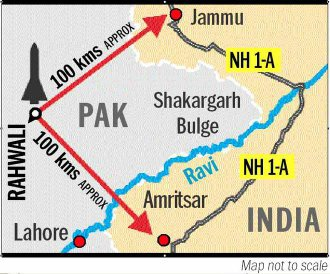
Image: Courtesy of Quora
During the hard-fought Battle of Basantar in this area (Dec 6 - 16) Indian Army won 11 medals (6 Maha Vir Chakra, 3 Vir Chakras & an unprecedented 2 Param Vir Chakras: Major Hoshiar Singh Dahiya & 2nd Lt Arun Khetrapal.
On Dec 16th the Pakistani Army equipped with Patton tanks launched their counter attack against 17 Poona Horse (armored regiment) during the Battle of Basantar. When the squadron commander asked for reinforcements over the radio Second Lieutenant Arun Khetarpal rushed with his Centurion tank into battle. He assaulted the enemy's strong points, physically overrunning them. In the course of this action, the commander of one of the tanks in his troop was killed, but Khetarpal continued to attack relentlessly. In the ensuing tank battle, Khetarpal with his 2 remaining tanks fought off and destroyed 10 tanks (of which Khetarpal personally destroyed 4 tanks). In the fight Khetarpal’s tank was hit and it burst into flames and he was severely wounded. Khetarpal was ordered to abandon his tank but realising that the enemy was still pressing their attack in this sector refused to do so. His final words over the radio to an officer who had ordered him to abandon his burning tank were: "No, Sir, I will not abandon my tank. My main gun is still working and I will get these bas…. “ In spite of grievous wounds and his own tank burning, he continued engaging the enemy tanks and destroyed one more. However, his tank was hit a second time as a result of which he died but the enemy was denied the breakthrough that they were looking for. For his unmatched valor on the battle field he was awarded the Param Vir Chakra posthumously. At age 21 he became the youngest soldier ever to be awarded the Param Vir Chakra. In his honor the parade ground at NDA (National Defence Academy) is named Khetarpal Ground.
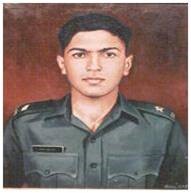
2/Lt Arun Khetarpal
1971 War - Land Operations Eastern Sector
The Eastern sector saw a plan which called for three different Army Corps to attack from 3 different directions to envelop the Pakistani Army in East Pakistan. The II Corps was to attack from West Bengal into western part of East Pakistan while the XXXIII (33) Corps attacked from the North west and the IV Corps attacked from the East into eastern part of East Pakistan. Pakistan believed that since the area adjoining West Bengal (i.e. area of operations of II Corps) was the most developed in terms of infrastructure the center of gravity of India’s attack (also referred to as schwerpunkt) would come from the West even though Dhaka lay the closest to India from Tripura in the east “as the crow flies” but was massively underdeveloped. Indian Army under IV Corps moved thousands of tons of supplies and built a massive infrastructure of new roads in Tripura to help open up this front which in the end proved to be decisive. Led by one of India’s finest tactical commanders Lt. Gen Sagat Singh the IV Corps brilliantly overcame obstacles and were the ones to first reach the outskirts of Dhaka.
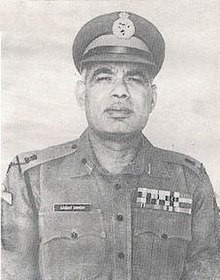
Lt Gen Sagat Singh

Image courtesy of 71: Dash to Dhaka written by Maj Gen G D Bakshi
Air mobility played a crucial role during this campaign. By 8th Dec Indian troops of IV Corps had reached the eastern banks of the Meghna near Ashuganj. Pakistani fearing that the Indians would cross the river blew up the bridge that connected both the banks of this massively wide river which was not easy to cross otherwise. Hence to prevent getting bogged down in their advance (till they found another way to cross the river) the idea of airlifting the troops to the western bank of the Meghna was conceived. During Operation Meghna (also known as Operation Cactus Lily) 14 Mi-4 helicopters flew over 400+ nonstop sorties during a span of 36 hours when they moved 5,000 troops and 51 tonnes of supplies to the western bank of the Meghna river.

This brilliant maneuver not only overcame this giant physical obstacle of crossing the mighty river but also now boxed in the Pakistani soldiers. These Pakistani soldiers could not fall back to Dhaka to its aid and they could not be used by the Pakistani military to make a last stand in Dhaka. Now the Indian soldiers had a relatively easier path straight to Dhaka without facing significant resistance.
By the 2nd week of the war the Pakistani Army was on the backfoot all across East Pakistan. Pakistani Army which had pursued a strategy of defending the outermost areas of East Pakistan had left Dhaka relatively unguarded as they did not want to lose any territory and wanted to give India a “bloody nose” at the border itself. However, as they realized that Indian Army was advancing on Dhaka, they had planned to recall the 93 Brigade from the northern part of East Pakistan (Mymensingh) to the aid of Dhaka. The hope was to use these troops to try to hold off Indian Army for a couple of weeks by which time the international pressure would force India to declare a ceasefire. Indian Army to thwart this fall back of the 93 Brigade in a daring operation decided to drop 700+ troops from 2 Para (Battalion) of Parachute Regiment in Tangail on the evening of Dec 11 way behind enemy lines to capture the Pungli bridge over the Jamuna river.

2 Para captured the bridge and in fierce fighting with the retreating Pakistani soldiers killed 340+ enemy soldiers. 2 Para linked up with advancing 1 Maratha Light Infantry (part of IA 95th Brigade of the 101 Communication Zone) which were advancing south towards Dhaka from the north of the country.
2 Para were one of the first forces to enter Dhaka later on Dec 16 during the surrender ceremony. Then MoD PRO Ramamohan Rao was asked by DGMO Major Gen. Inder Singh Gill to give good publicity to this paradrop. Since they could not arrange for the pictures as the paradrop originated from a place where they had no access. He instead had photos from Agra a year ago when he covered an exercise by the Para Brigade. He got these photos published saying that the Indian Para Brigade had been airdropped but conveniently left out the fact that this was a file photo from the previous year. This made it appear to some that the entire brigade (~5k men) was dropped vs the actual battalion (~700+ men). This was then also picked up and republished by foreign media like the BBC, London Times, New York Times etc. This subterfuge along with the valiant actions of the Para Battalion demoralized the Pakistani forces who surrendered just 5 days later to the Indian Army (while in theory the Pakistani Army could have fought much longer).
1971 War - Closing stages of the war
Early on 14th Dec India intercepted a message by SIGINT (Signals Intelligence) (which was also confirmed by Mukti Bahini sources) that a large meeting of senior military and civilian officials was to be held in the Governor's House in Dhaka. Indian military leadership saw this as a good opportunity to strike at the senior leadership of the Pakistani forces in East Pakistan. 4 MiG-21 jets of IAF attacked the Governor’s house with multiple rockets. The roof of the room where the meeting was held caved in and a wall collapsed. While no one was killed apparently this totally demoralized the Pakistani leadership. The civilian Governor resigned immediately and fled to a neutral zone building which was deemed as safe from any attacks. Pakistani leadership in Dhaka sent out a proposal for a ceasefire to India via the United States who for reasons unknown chose to sit on this for more than a day vs relaying the message to India.
Nixon and Kissinger were now worried that with East Pakistan falling to India soon India might turn their attention to West Pakistan. A defeated West Pakistan was not in their own interests due to their covert outreach to China. The US now ordered it’s 7th Fleet (which included aircraft carrier USS Enterprise) to enter the Bay of Bengal to intimidate the Indians. Following this grave provocation from the Americans, India secretly activated a provision in the Indo-Soviet Treaty of Friendship, where either side would come to the defense of the other if attacked. A Russian naval task force was sent to intercept the American Task Force under the command of Admiral Vladimir Kruglyakov who claimed in an interview post retirement that he was ordered to surface his submarines in full view of the American fleet.
Once Gen Manekshaw got the ceasefire message on Dec 15th he declared a stop in fighting from that evening onwards and asked Maj Gen. Jacob to go to Dhaka to get the surrender document signed by Pakistani commander in East Pakistan Lt Gen Niazi. Lt Gen Niazi first dithered on signing the surrender arguing that they had sent over a proposal (via the Americans) of a ceasefire and not surrender. Maj Gen Jacob then told him in no uncertain terms that if he did not surrender the attacks would resume (including air attacks) and gave him 30 minutes to finalize his decisions either way. At this point a broken and defeated Niazi agreed to surrender when Maj Gen Jacob came back after 30 minutes. Later that day at the Race Course ground in full view of the media Lt Gen Niazi signed the surrender document with Lt Gen J S Arora (Eastern Army Commander) signing it from the Indian side which ended the war.
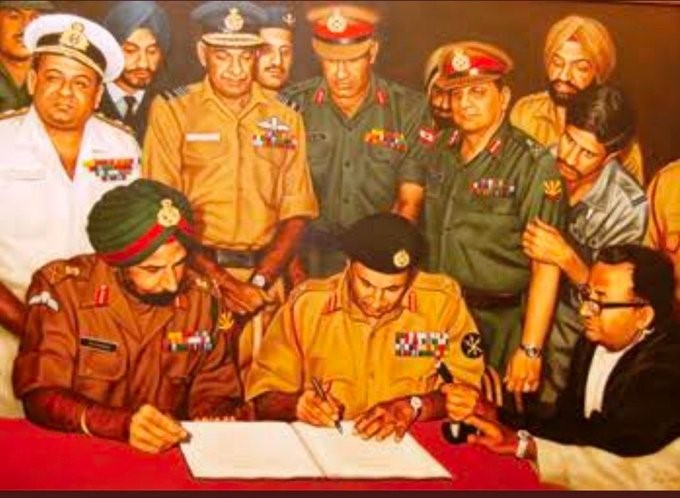
Lt Gen Aurora (left) with (Pak) Lt Gen Niazi (right) signing surrender document
LEGACY
From the Pakistani perspective this was a traumatizing event where the nation was split into two. Pakistan understood from that day that it would be difficult to win in an all-out conventional war with India and hence had to adapt its strategy against India. This lay the path to eventual nuclearization of the Indian subcontinent. PM Bhutto famously remarked that “we will eat grass but we will get the atomic bomb”. This was seen as a necessary deterrent against a superior Indian conventional force splitting the nation again in the future. Few years down the road, they started supporting terrorism against India to “bleed India by a thousand cuts”. When they felt threatened by India to prevent any aggressive response by India, they liberally used the “nuclear” blackmail card to blunt India’s conventional superiority.
When Yahya Khan was forced to leave after the debacle of the 1971 Zulfikar Ali Bhutto (one of Pakistan’s shrewdest politicians) became the PM of Pakistan. He started out as Pakistan’s youngest cabinet minister in 1958 and had slowly moved through the ranks becoming Foreign Minister in 1963. Prior to the 1965 war Bhutto egged on Pakistani dictator Ayub Khan to start the 1965 war with an intention to capture Kashmir. Post the conclusion of the war which didn’t go as expected (while Kashmir was far from being captured and instead the Indian Army reached the outskirts of Lahore) he laid the blame at Ayub’s feat and resigned from the government.
Eventually Ayub Khan paid the price for the debacle and another Pakistani general Yahya Khan came in. After the 1971 war when Yahya Khan left Bhutto became President first and then PM. He ruled till 1977 when he was deposed in a military coup and hanged by one of his handpicked generals Zia Ul Haq who both led the country down the path of becoming more radicalized. There were several other senior Lt Generals ahead of Zia Ul Haq to be promoted to Chief of Army Staff but Bhutto chose Zia Ul Haq over others and paid the price eventually. This is somewhat eerily similar to later in the late 1990’s when then Pak PM Nawaz Sharif who chose Pervez Musharraf over other senior generals and was later deposed in a coup.
From the Indian perspective unlike the previous wars in 1947-48 and 1965 this was a decisive victory against Pakistan. While the pain of the defeat in the 1962 war with China could never be erased, this win did go a long way in soothing those wounds from just 9 years ago. The military aim of capturing Dhaka and helping the goal of creating an independent new nation of Bangladesh was achieved. India was able to withstand enormous international pressure especially from a superpower like the USA and completed a blitzkrieg campaign to liberate Bangladesh in less than 2 weeks. This war was meticulously planned by the Indian military planners over months and there was a good level of jointness between the various arms of the Indian Armed Forces.
Even India’s external intelligence agency R&AW (Research & Analysis Wing) played a crucial role in the successful outcome of this war. R&AW trained thousands of Mukti Bahini soldiers and provided crucial intelligence which was vital to the war effort. One disappointment post-1971 war was during the subsequent meeting between both nations in Shimla. PM Indira Gandhi could not extract robust assurances from new Pak PM Zulfikar Ali Bhutto who later reneged on the promises made during this meet.
By the end of that decade another major event happened in South Asia which shaped events for years to come: 1979 Russian invasion of Afghanistan. USA to make sure that Afghanistan was Russia’s proverbial “Vietnam” threw its lot fully with Pakistan to help transfer aid to the local Mujahideen fighters in Afghanistan who were fighting against Russia.
While Pakistan worked on its covert nuclear weapons program the USA mostly chose to look away as it needed Pakistani help to arm the rebels in Afghanistan against Russia. The sight of the 7th Fleet sailing into the Bay of Bengal had a psychological impact of straining the India-US relations for decades to come, climaxing in the decade of the 90’s.
The thawing in India-US ties post the 1998 Pokhran tests started with the Jaswant-Talbott talks (between the External Affairs minister & US Deputy Secretary of State Strobe Talbott). India-US relations today are way stronger than ever before which is diametrically opposite from the events of almost 50 years ago when the 7th Fleet steamed into the Bay of Bengal! The events post 1971 war also started a phase when India started leaning towards Soviet Union for the next 2 decades forging a close partnership including significant purchases of military equipment from Russia, a legacy which lasts even today!
From a global perspective, such a brazen and quick attempt to redraw sovereign lines was considered a threat and the United Nations passed not one but two resolutions (Resolution 303 and 307). The first resolution was on December 6, barely three days after the war had started asking both the sides to exercise restraint. But with the USSR, Poland, France and the United Kingdom abstaining, there was no unanimity and this resolution fell through. 5 days after the war ended, on December 21, there was a successful resolution asking for respecting the cease-fire line in Jammu and Kashmir to be respected. This led to the subtle global recommendation that the LOC should be considered as the de-facto border between India and Pakistan in Jammu and Kashmir moving forward.
This was originally discussed on Episode 30 of the India Rising podcast (@indiarisingmk) hosted by Mohal Joshi (@MohalJoshi) & Kishor Narayan (@veggiediplomat).
YouTube: https://www.youtube.com/watch?v=70RHQ5HDmTc
Sound Cloud: Episode 30 1971 Bangladesh Liberation War by India Rising | Free Listening on SoundCloud



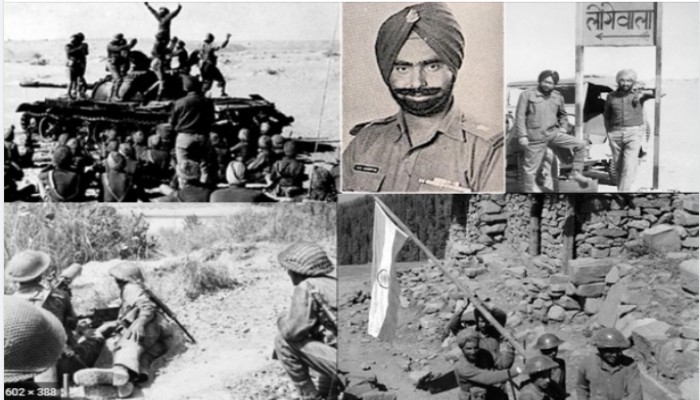



Comments